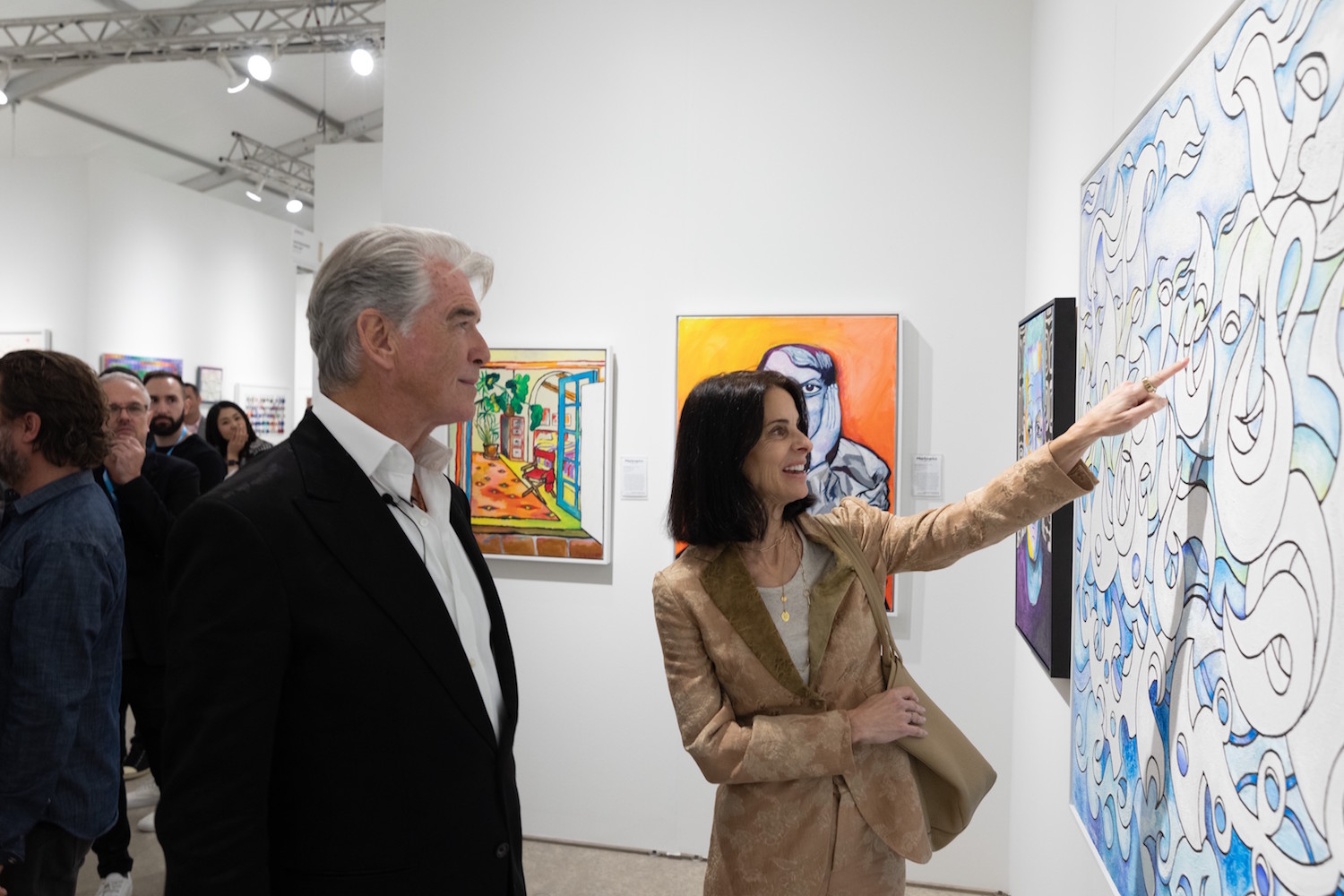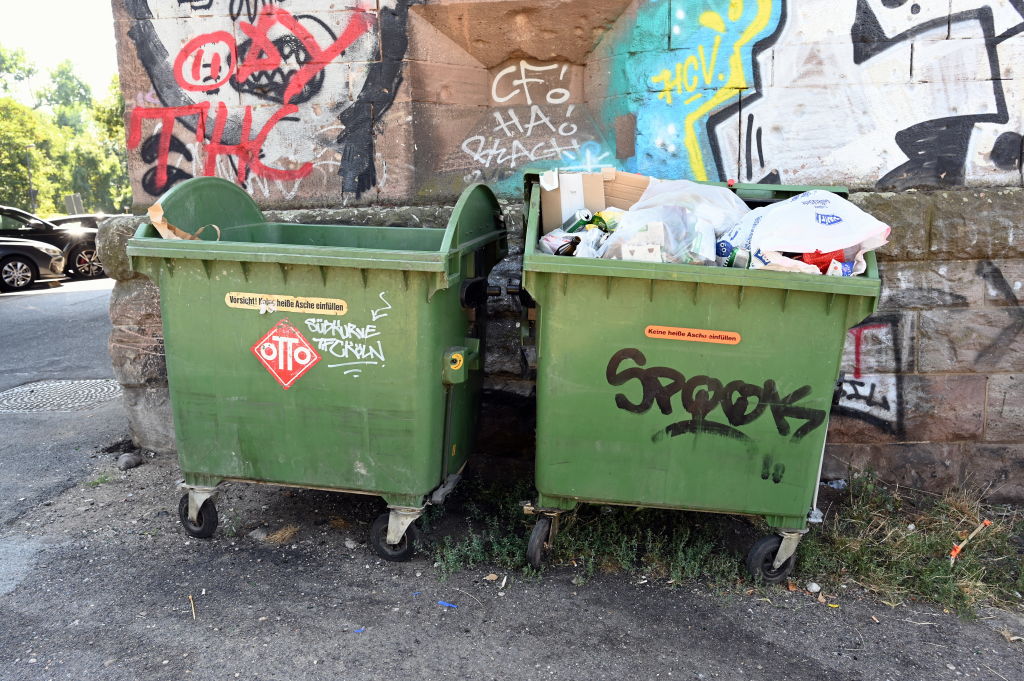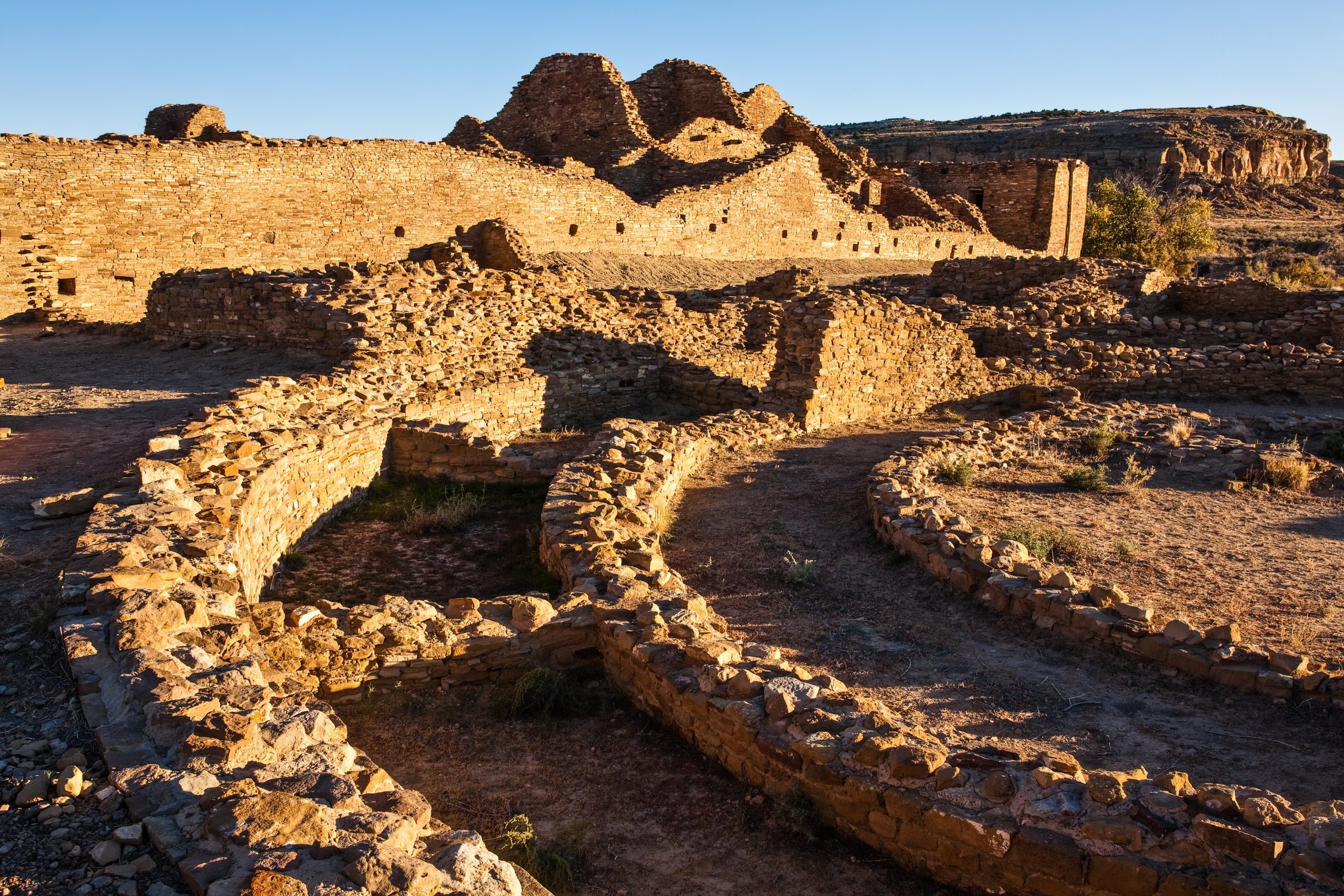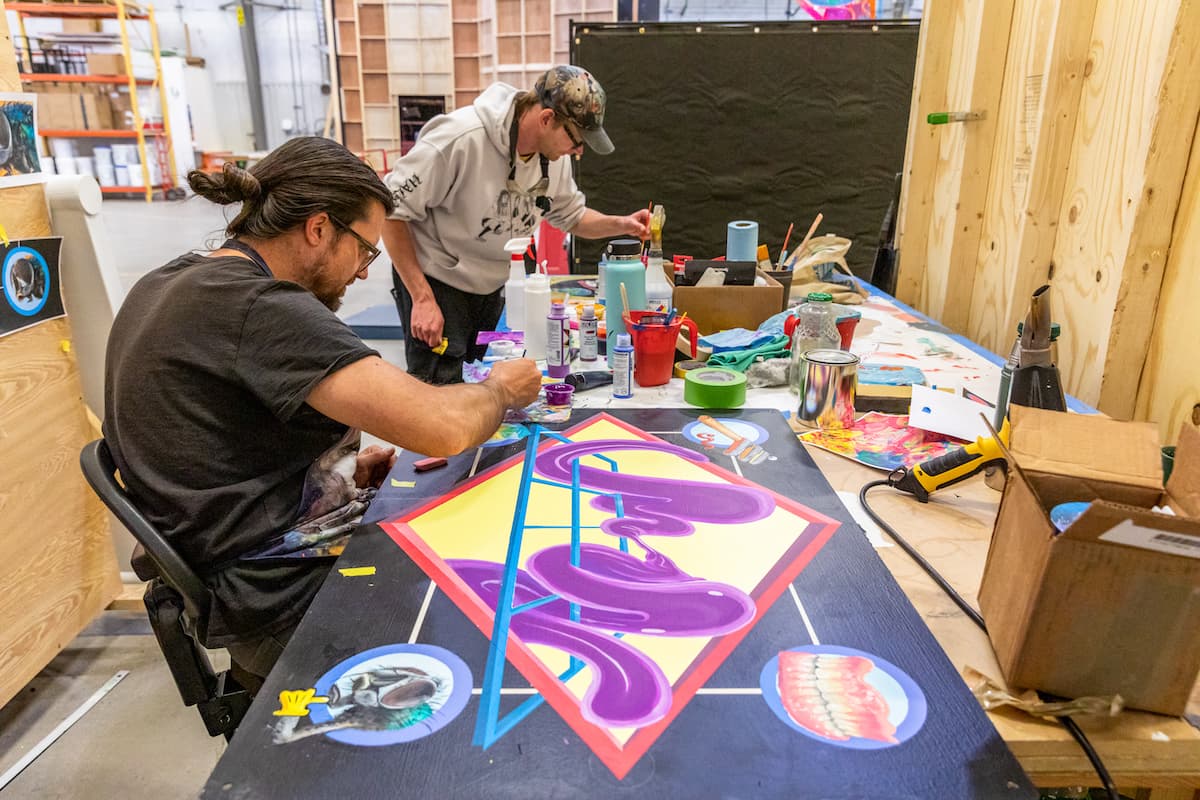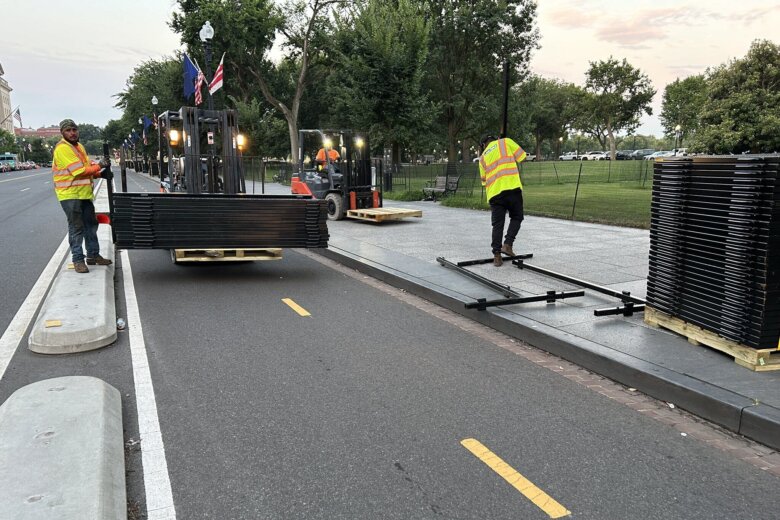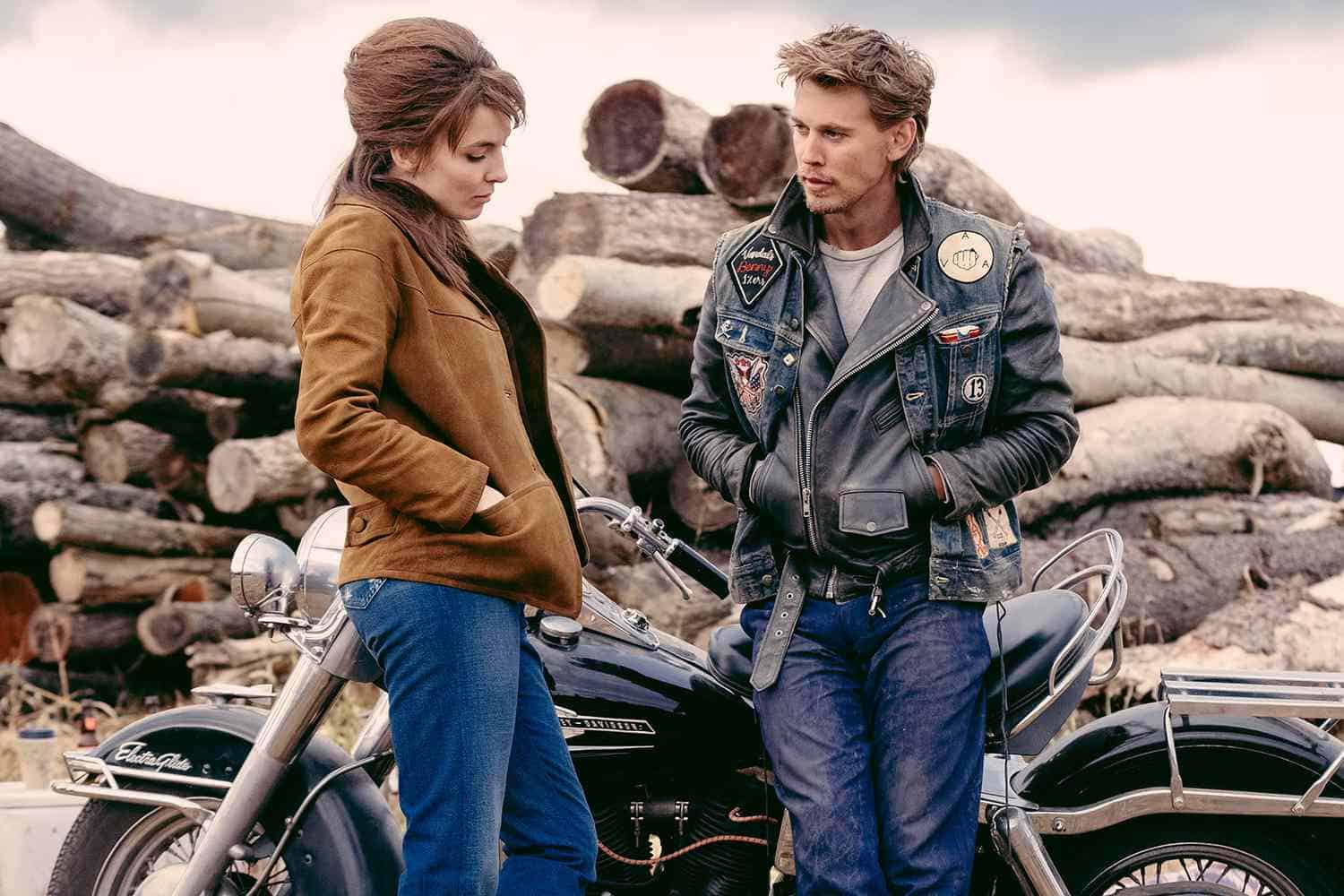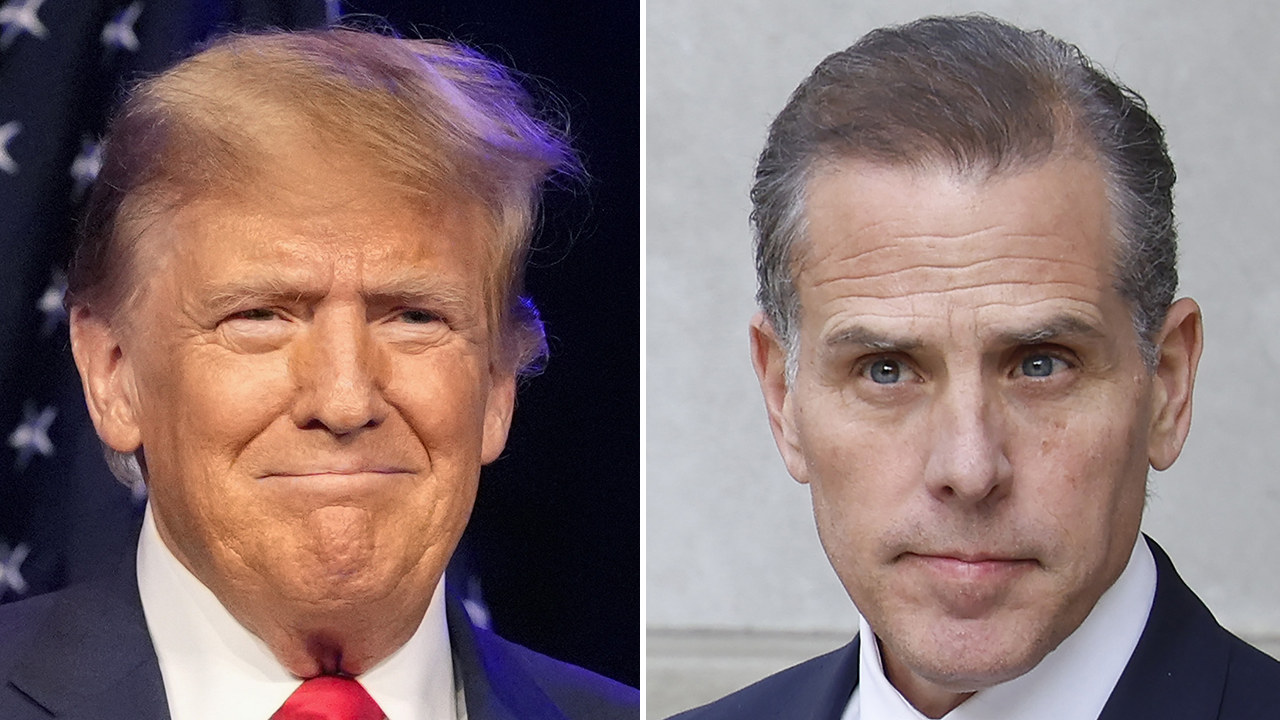It was above 90 degrees in the District on Sunday, for the 17th day in the past 21. In that simmering three-week stretch, two of the four days below 90 were also fairly warm, with highs of 88.
Washington, D.C
Art Shines in Washington, D.C., This Summer. Here Are Four Ways to Make the Most of the Cultural Highlights | Artnet News
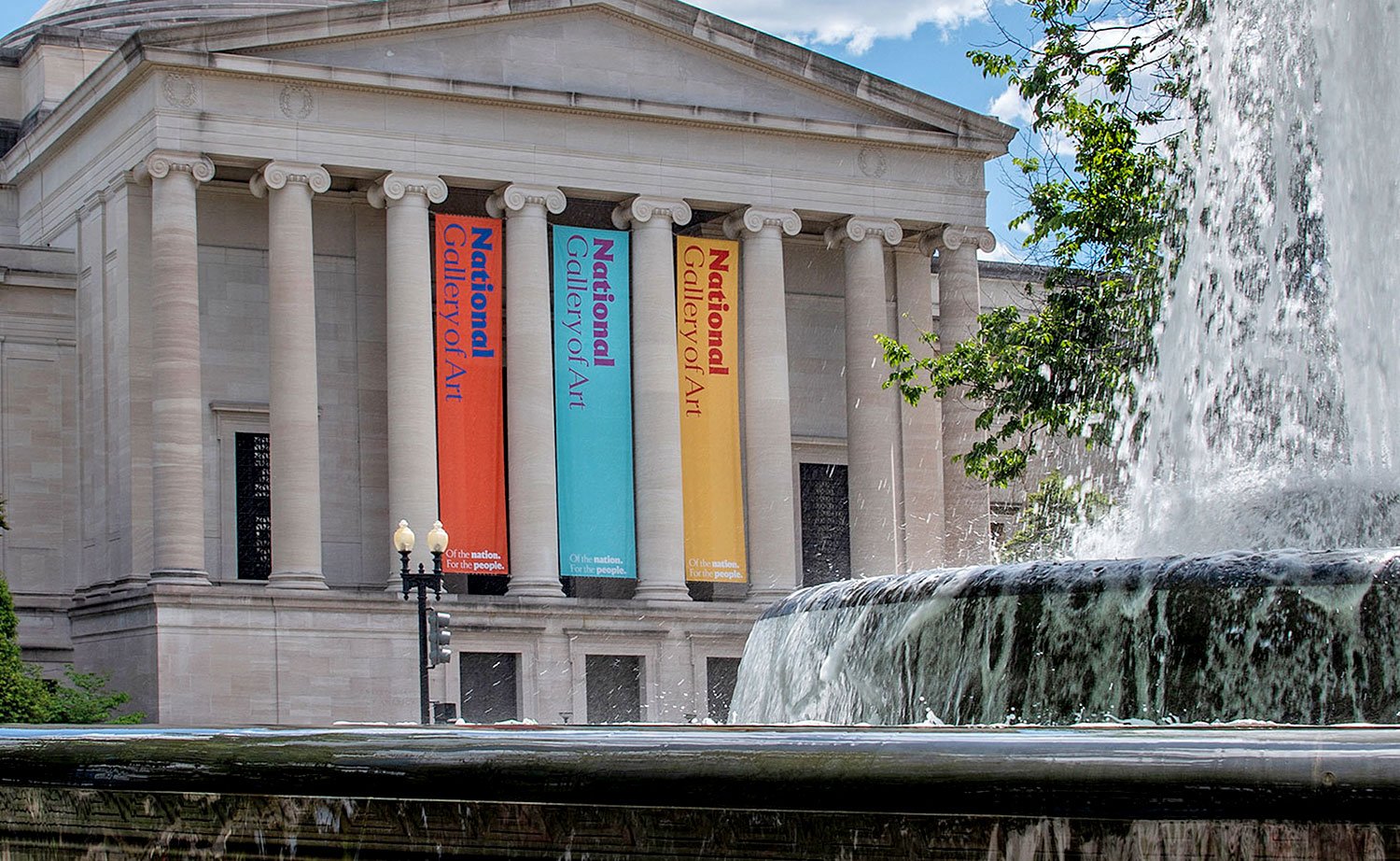
Washington, D.C., may be the seat of the United States federal government, but it also harbors a robust cultural scene. From national landmarks like the Jefferson Memorial and Maya Lin’s Vietnam Veterans Memorial to contemporary art venues like the Hirshhorn Museum and the new Rubell Museum, plus the largest concentration of Smithsonian institutions, there is no shortage of art and culture in the nation’s capital.
We’ve curated a list of must-see special exhibitions and permanent installations perfect for a summer jaunt to the district, complete with restaurant recommendations to round out your experience.
National Gallery of Art
Sculpture Garden
There is perhaps no better a spot for art viewing in D.C. than the National Gallery of Art, particularly its sculpture garden located on the National Mall. Sprawling and magical, the garden is oriented around a fountain that in the winter transforms into an ice skating rink, and in the summer provides a welcome respite from the heat.
Marc Chagall, Orphée (1969). The John U. and Evelyn S. Nef Collection. Courtesy of the National Gallery of Art.
Monumental modern and contemporary sculptures are installed across all six acres of the garden, serving as an art-filled oasis amid the concrete jungle. Highlights include Marc Chagall’s Orphée (1969), a tile mosaic loosely inspired by Greek mythology and originally commissioned by art patrons John and Evelyn Nef for their own garden. Crafted in Murano glass and stones from Carra, Italy, the work was gifted to the museum in 2009 and remains a jewel of its collection.
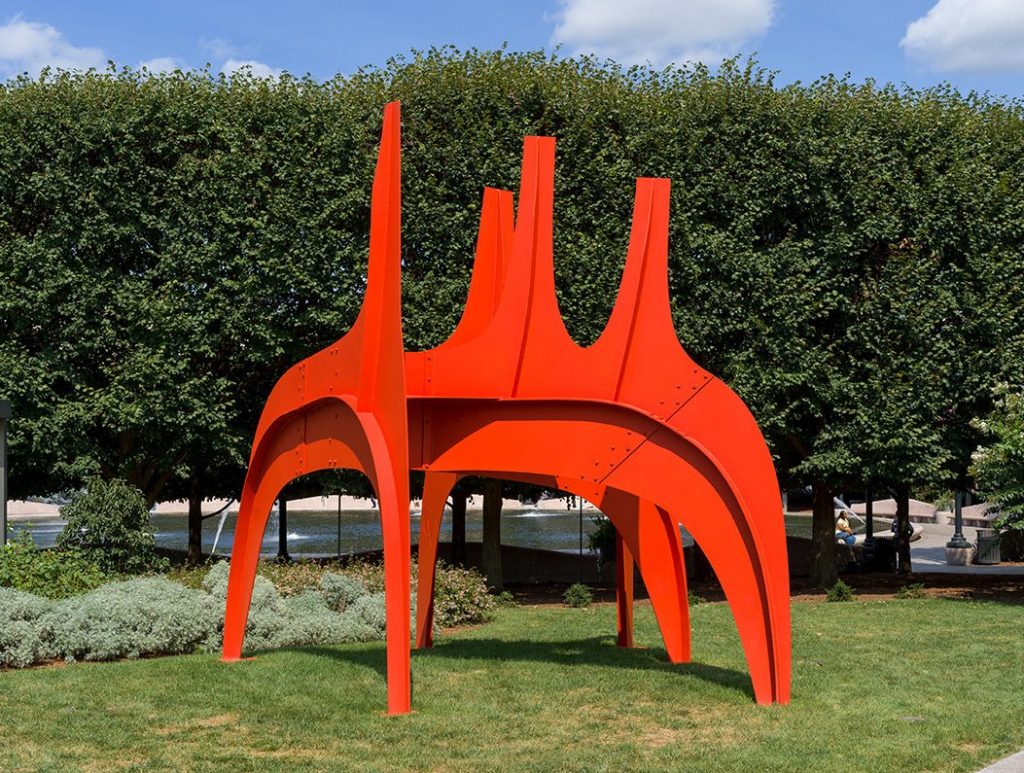
Alexander Calder, Cheval Rouge (Red Horse) (1974). Courtesy of Calder Foundation, New York, and the National Gallery of Art.
Elegant geometric sculptures by Tony Smith, Barry Flanagan, Mark di Suvero, Scott Burton, David Smith, and Joel Shapiro also dot the landscape, punctuated by colorful offerings like Alexander Calder’s jaunty Cheval Rouge (Red Horse) (1974), Roy Lichtenstein’s House I (1996), and Robert Indiana’s AMOR (1998). One of Louise Bourgeois’s spiders perches like an open umbrella over a bed of greenery, while Claes Oldenburg and Coosje van Bruggen’s large-scale steel sculpture Typewriter Eraser, Scale X (1998) is a surreal sight.
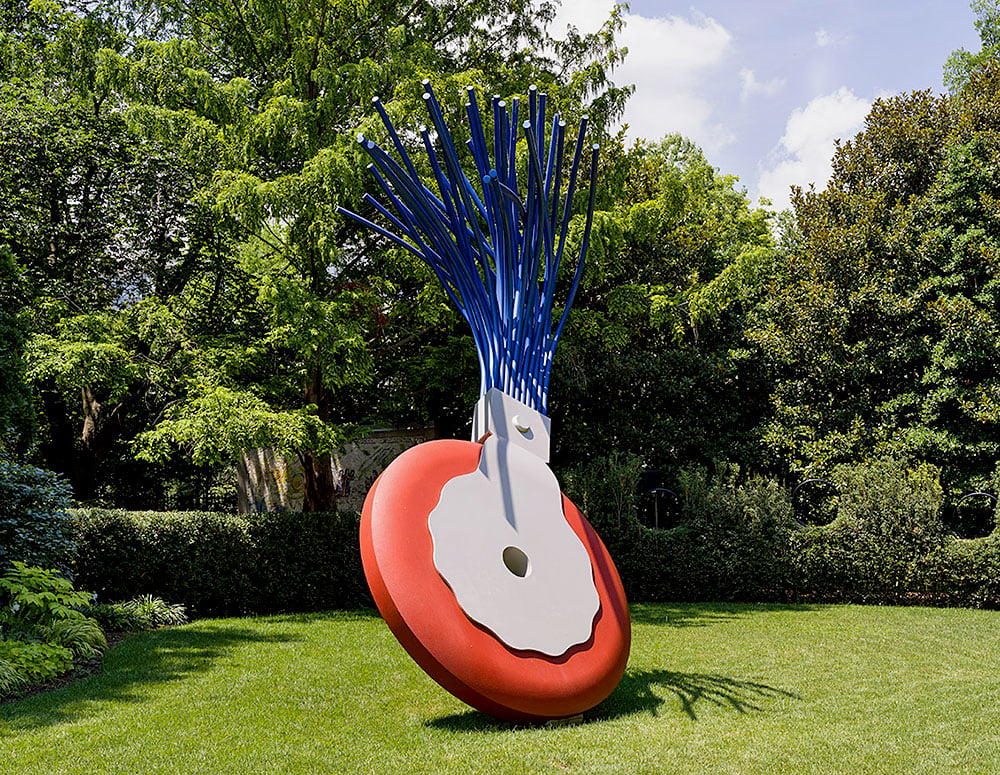
Claes Oldenburg and Coosje van Bruggen, Typewriter Eraser, Scale X (1998–1999). Courtesy of the National Gallery of Art.
Now that you’ve gotten your fill of this garden of earthly delights, it’s time to refuel. We suggest a dip into Dirty Habit, a deceptively named upscale restaurant about one block north of the National Gallery, serving delectable drinks that will revive even the weariest traveler. From there, you’re just steps from Riggs, a 19th-century bank building recast as an ultra-luxe hotel where the rooms have been fashioned after a safety deposit box. Café Riggs is beloved by locals, as is the subterranean Silver Lyan bar, housed in the bank’s original vault. Alternatively, the Conrad—designed by Pritzker Prize-winning firm of Herzog & de Meuron—offers a more modern take on five-star hospitality with its clean lines and Calacatta marble walls. Estuary, the hotel’s restaurant, emphasizes fare sourced from nearby Chesapeake Bay, such as mouthwatering Maryland crab rolls.
Dumbarton Oaks Museum
“Hugh Hayden: Brier Patch”
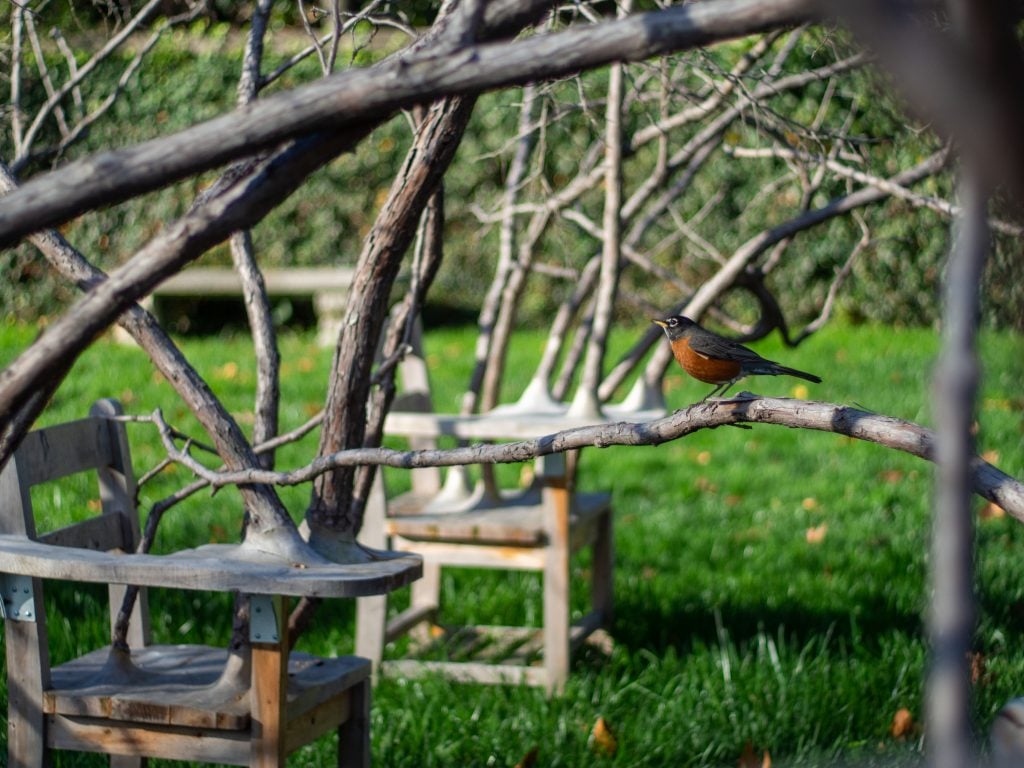
Installation view of “Hugh Hayden: Brier Patch” at Dumbarton Oaks. Photo: Kevin McDonald. Courtesy of Dumbarton Oaks.
Start your day in the historic enclave of Georgetown, in the northwest corner of the city, with a cup of joe and a bagel from local favorite Call Your Mother Deli (eat here and, yes, call her!). You can’t miss the bubblegum-pink building with a line snaking out the front door and down the cobblestones.
Then head north toward Dumbarton Oaks (1703 32nd Street), the Harvard University research center, museum, and garden. Against the backdrop of a Philip Johnson-designed pavilion and classic Federal-style house museum, the landscape—designed by Beatrix Farrand—is a prime example of the Country Place Era style, boasting an orangery, rose garden, and ellipse. It’s here that the museum inaugurated a series of contemporary art interventions in 2009, and where Texas-born, New York-based artist Hugh Hayden’s dreamlike installation has taken root.
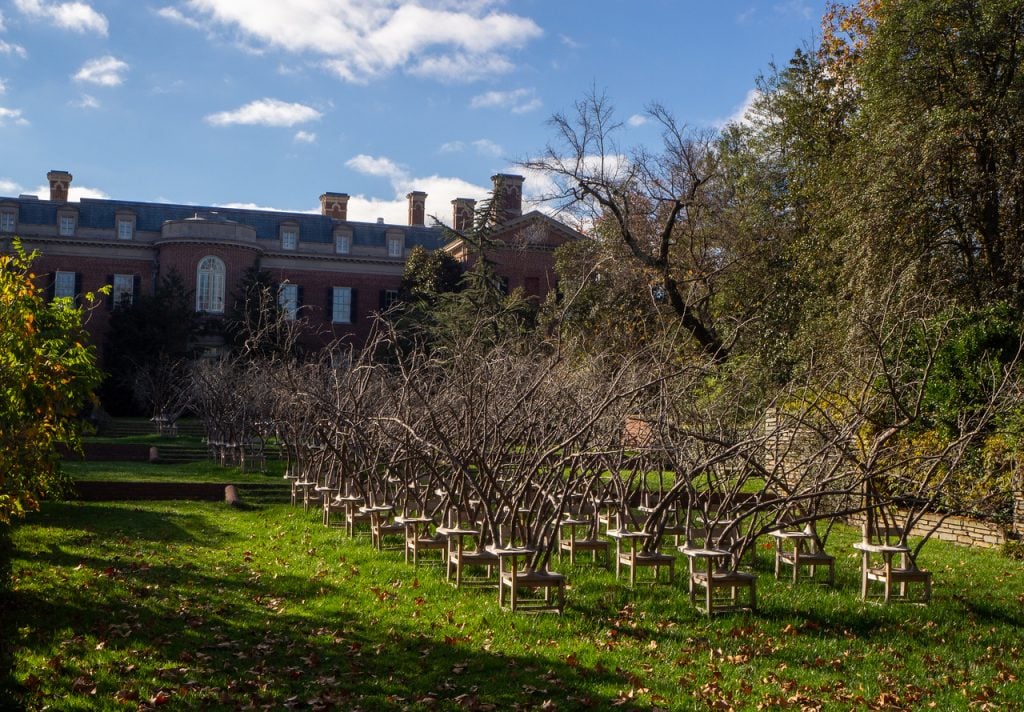
Installation view of “Hugh Hayden: Brier Patch” at Dumbarton Oaks. Photo: Kevin McDonald. Courtesy of Dumbarton Oaks.
New Yorkers may recall Hayden’s brilliant Brier Patch from its original setting at Madison Square Park, and now it has a new life in Washington, D.C. A total of 100 wooden elementary school-style desks are situated in clusters, from which white cedar tree branches sprout. Why does one seed prosper and grow when others lay dormant? What is the right environment to help a student thrive? These are some of the big questions that Hayden’s installation asks.
When in a college town, do as the students do and stop into Martin’s Tavern, a no-nonsense Georgetown haunt famous for its presidential sightings. Before his turn at the White House, John F. Kennedy is said to have proposed to Jackie here, and Harry and Bess Truman were regulars with their daughter Margaret while she was a student at nearby George Washington University.
U.S. National Arboretum
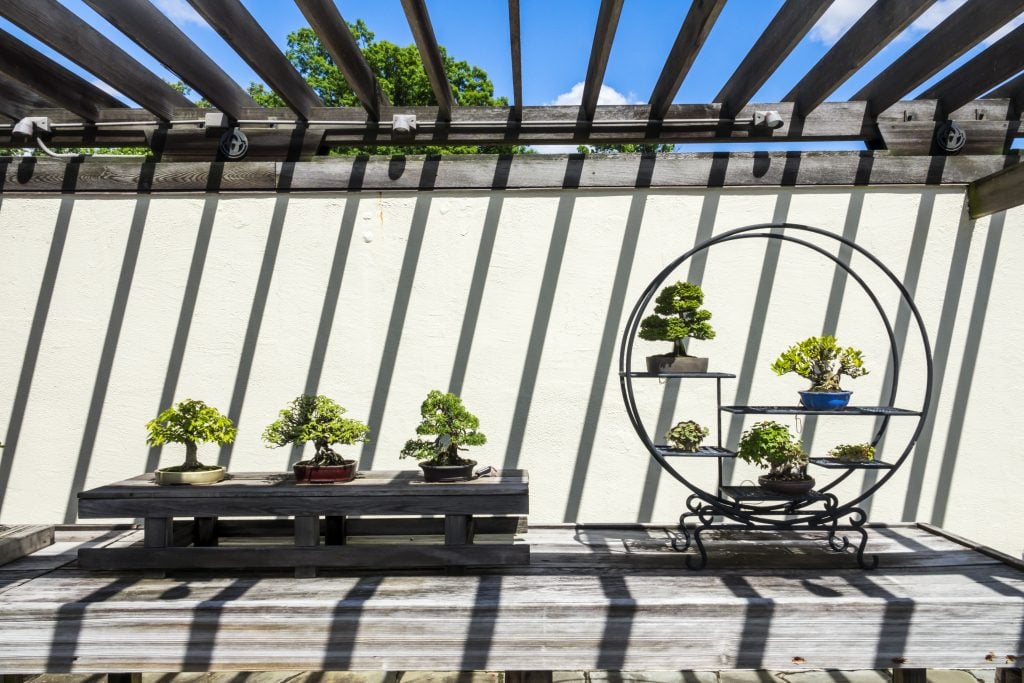
Washington D.C., U.S. National Arboretum, Bonsai and Penjing Museum tree display. Photo: Jeffrey Greenberg/Universal Images Group via Getty Images.
The District of Columbia is, of course, known for its many historic monuments and memorials, not to mention the Capitol building, Washington Monument, and Tidal Basin, but one of the lesser-known gems is this outdoor museum. The Arboretum (3501 New York Avenue) is a stunning expanse of 446 acres that houses a wealth of displays including the National Bonsai & Penjing Museum, the Gotelli Conifer Collection, and the Flowering Tree Walk, where you can take in the glorious colors of the azalea blooms.

The National Capitol Columns at the United States National Arboretum in Washington, D.C. (Photo by Daniel SLIM / AFP) (Photo by DANIEL SLIM/AFP via Getty Images)
The crown jewel of the museum, however, is the permanent installation of the National Capitol Columns. The twenty-two ornately constructed Corinthian columns are arranged in a formation that brings Stonehenge to mind. The stately sandstone columns, quarried from Virginia, were originally designed to support the East Portico of the Capitol and served as the impressive backdrop for the inaugurations of presidents Andrew Jackson and Abraham Lincoln, but were removed in 1958 and later relocated to these 20 acres of meadow.
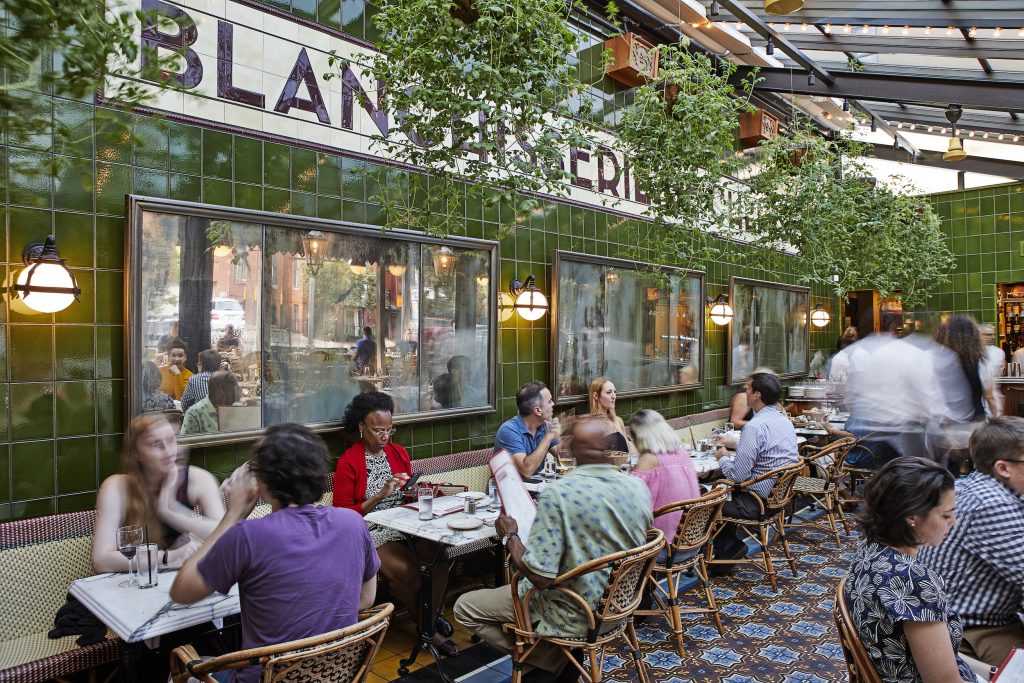
Inside the Paris-inspired restaurant Le Diplomate in Washington, D.C. Photo: Tom McCorkle for the Washington Post via Getty Images.
Now on to Le Diplomate. You might do a double take when you enter the lively French-style brasserie, with its evocations of Parisian cafe culture and a clientele that reads like a who’s who of Beltway pundits. The tricolore of the French flag features prominently, as does vintage Tour de France memorabilia lining the walls. There’s not a bad seat in the house—if we’re being diplomatic.
Glenstone Museum
Outdoor sculptures & Ellsworth Kelly
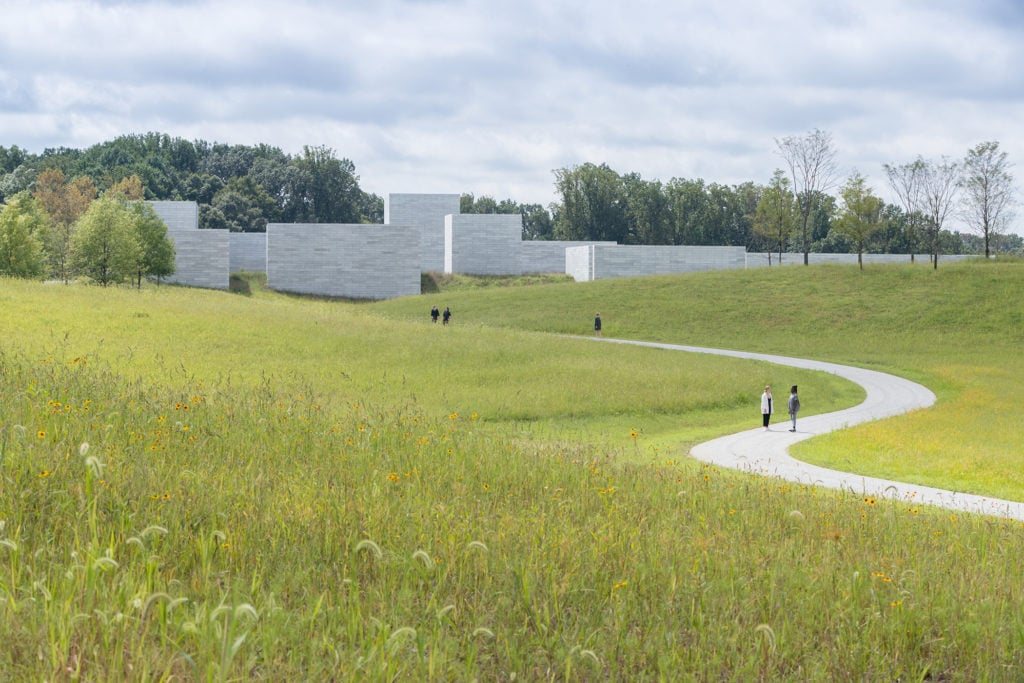
Approach to the Pavilions at Glenstone. Photo: Iwan Baan. Courtesy of Glenstone Museum.
One of the newer additions to the Washington D.C. art landscape is the truly spectacular Glenstone Museum in Potomac, Maryland (12100 Glen Road), where the minimalist estate founded by collectors Mitch and Emily Rales to house their contemporary art collection meshes beautifully with the surroundings. It might be just 15 miles outside the nation’s capital, but Glenstone feels as if it’s from another planet—a lush, art-filled planet boasting more exhibition space than either the Whitney in New York or the Broad in Los Angeles.
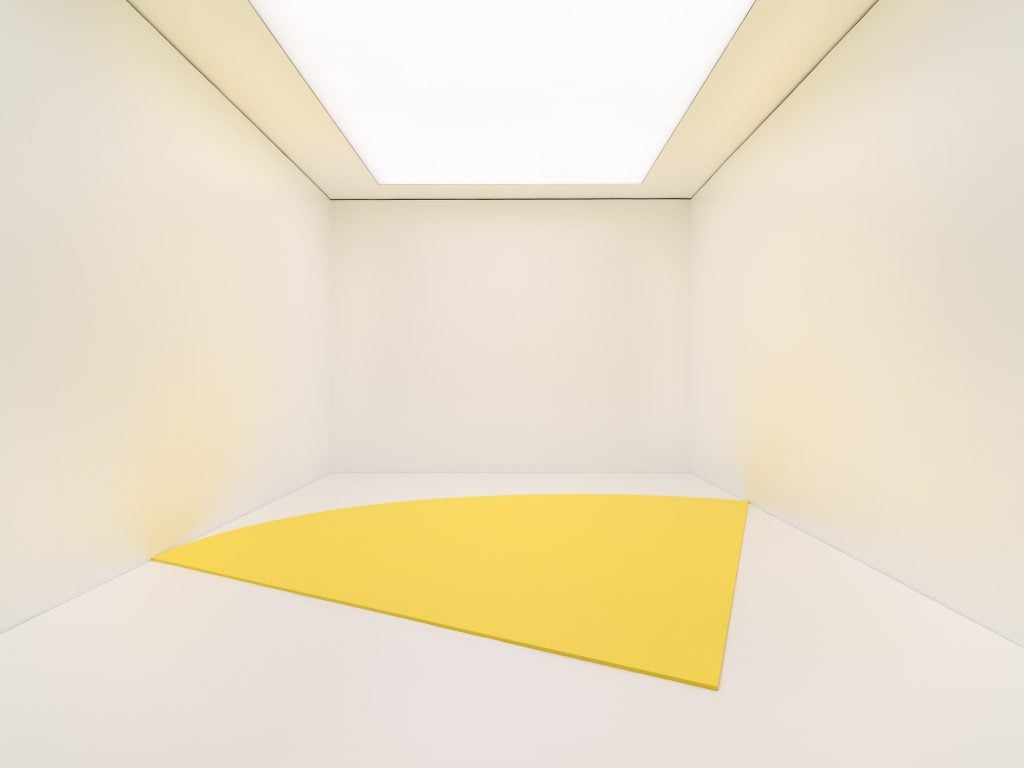
Installation view of Ellsworth Kelly’s Yellow Curve (1990) at Glenstone. © Ellsworth Kelly Foundation. Photo: Ron Amstutz. Courtesy of Glenstone Museum, Potomac, Maryland.
Though it opened in 2006, it was an expansion in 2018 that catapulted the museum to the level of world-class art institution. Currently on view is the extensive survey “Ellsworth Kelly at 100,” the centennial of the late American artist featuring works from his 70-year career. Kelly’s oeuvre runs the gamut from cerebral meditations on form to colorful geometric paintings—like those from the canonical “Spectrum” series. But it’s his landmark large-scale floor painting Yellow Curve that takes pride of place inside the museum, taking up more than 600 square feet of floor space in its first exhibition since it was conceived in 1990.
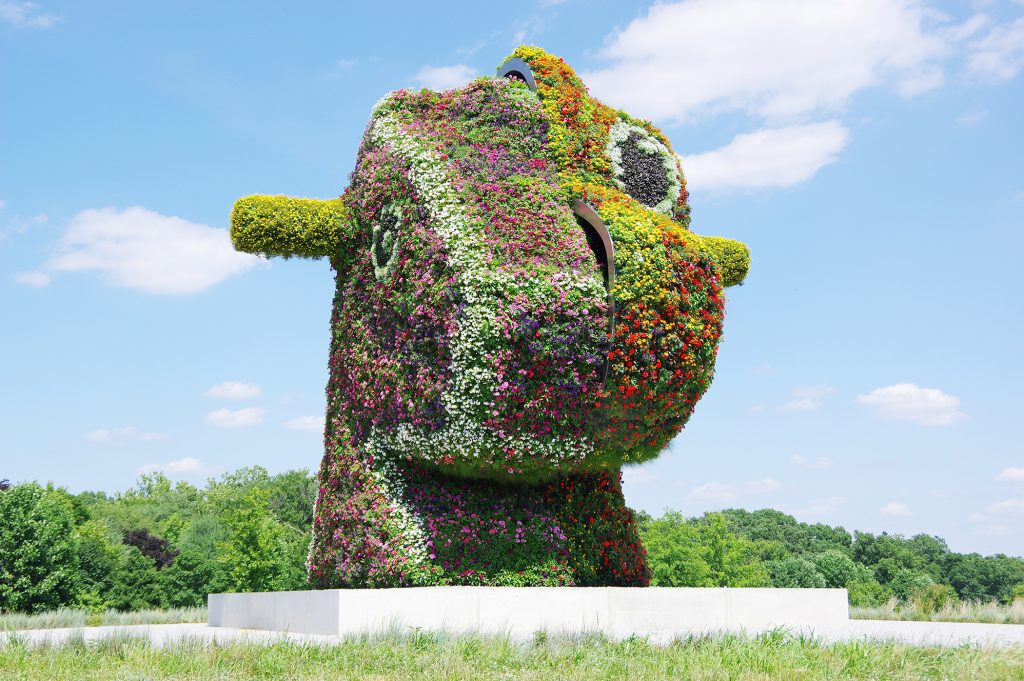
Jeff Koons, Split-Rocker (2000). © Jeff Koons. Courtesy of Glenstone Museum.
Don’t leave Glenstone’s grounds without witnessing first-hand the visual delights of Jeff Koons’s crowd-pleasing Split-Rocker topiary sculpture. Half dinosaur and half rocking horse, the florally festooned work boasts its own computer-controlled irrigation system, designed to monitor which zones require more or less water at any given time and for each individual species. Marigolds, zinnias, and petunias, oh my!
Visit Artnet’s Summer Itineraries in New York, Los Angeles, and Chicago.
Follow Artnet News on Facebook:
Want to stay ahead of the art world? Subscribe to our newsletter to get the breaking news, eye-opening interviews, and incisive critical takes that drive the conversation forward.

Washington, D.C
Fencing installed around Ellipse near White House in preparation for NATO Summit – WTOP News
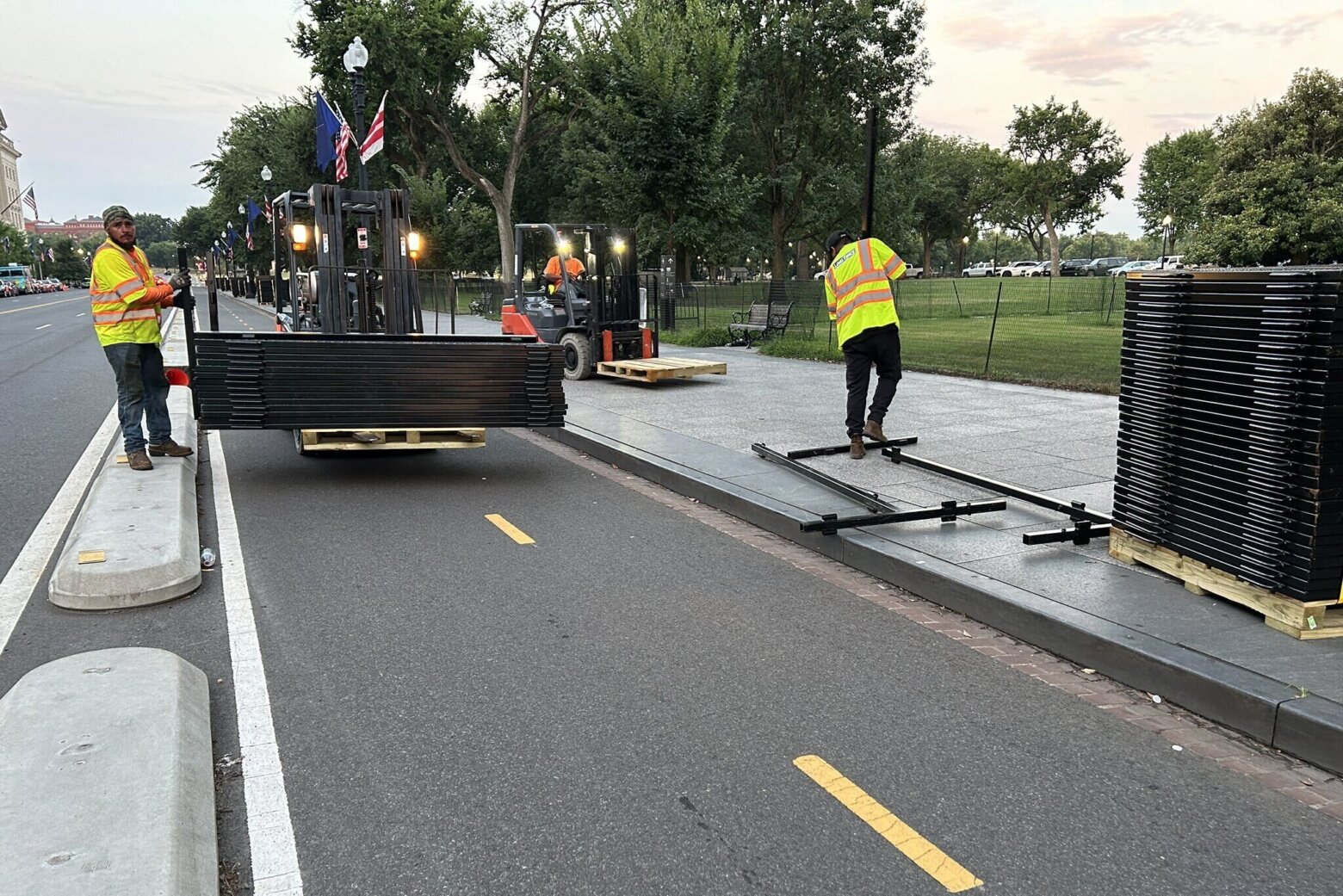
In preparation for the NATO Summit in D.C., crews installed tall, latticed steel fences on the sidewalk along the Ellipse near the White House on Monday.
Listen live to WTOP for traffic updates on the 8s.
In preparation for Tuesday’s NATO Summit in D.C., crews from a contractor installed tall, latticed steel fences on the sidewalk along the Ellipse near the White House.
A small forklift unloaded pallets of the fencing onto the sidewalk on Monday morning while crews dragged and then assembled the fencing.
Most of the security fencing along the sidewalk isn’t blocking access to the sidewalk. It’s running parallel to the sidewalk to prevent someone from climbing over it. So pedestrians still have access to the sidewalk.
Fencing was already in place around the Mellon Auditorium and Washington Convention Center, where the summit will take place from July 9-11.
A number of roadway closures come into effect on Monday near Mellon Auditorium and White House and the Washington Convention Center.
Roadway, parking closures beginning Monday
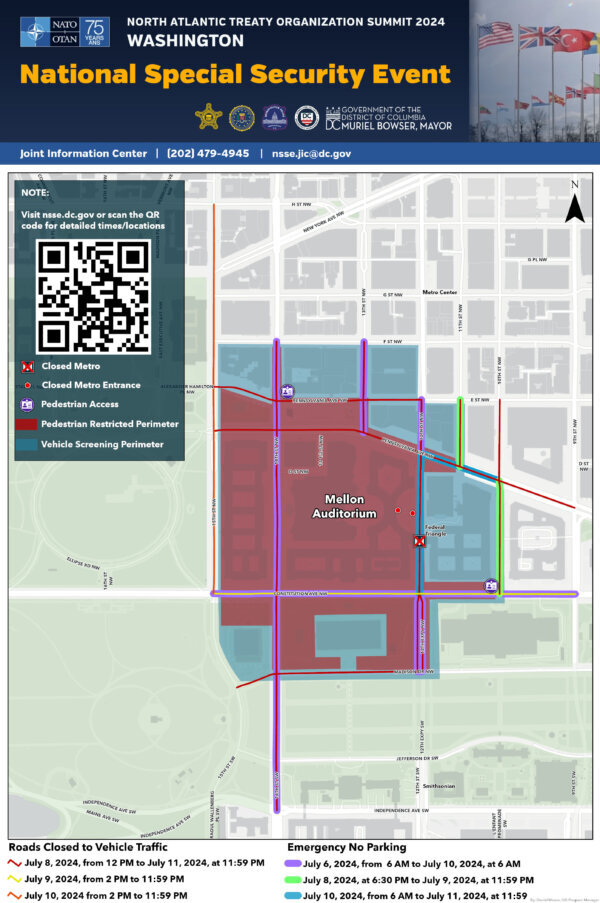
Parking isn’t allowed on these streets from Monday, July 8 at noon until Thursday, July 11 at 11:59 p.m.
- H Street from 15th Street to 17th Street, NW
- Connecticut Avenue from H Street to I Street, NW
- 16th Street from H Street to I Street, NW
Vehicles can’t drive on these streets from Monday, July 8 at noon through Thursday, July 11 at 11:59 p.m.
- H Street from Vermont Avenue to 17th Street, NW
- Connecticut Avenue from H Street to I Street, NW
- 16th Street from H Street to I Street, NW
No parking is allowed on these streets from Monday, July 8 at 6:30 p.m. through Tuesday, July 9 at 11:59 p.m.
- Constitution Avenue from 15th Street to 17th Street, NW
- 11th Street from E Street to Pennsylvania Avenue, NW
- 10th Street from Pennsylvania Avenue to Constitution Avenue, NW
- New York Avenue from 14th Street to 15th Street, NW
- From 14th Street to 15th Street, NW
- From 14th Street to 15th Street, NW
These streets will be designated as emergency no parking from Monday, July 8 at 9:30 a.m. through Friday, July 12 at 6 p.m.:
- I Street from 6th Street to 10th Street, NW
- New York Avenue from 10th Street to 13th Street, NW
- Massachusetts Avenue from 10th Street to 13th Street, NW
This street will be closed to all vehicles on Monday, July 8 at 9 a.m. through Friday, July 12 at noon:
- L Street from Seventh Street to Ninth Street, NW
Traffic, parking and pedestrian closures will continue to increase over the next few days.
Pedestrian access will also be restricted nearby the event spaces; you won’t be able to walk into those areas without a pass. The bottom line: leave extra time to get around downtown between Monday and Thursday.
Get breaking news and daily headlines delivered to your email inbox by signing up here.
© 2024 WTOP. All Rights Reserved. This website is not intended for users located within the European Economic Area.
Washington, D.C
Mackenzie Cole Attends Prestigious Journalism Conference in Washington, D.C. – Excelsior Citizen

Excelsior Springs, MO (July 7, 2024) — Mackenzie Cole, a dedicated student reporter and daughter of Jason and Courtney Cole, the founders of the Excelsior Citizen, embarked on an exciting journey early Sunday morning to attend the esteemed Washington Journalism and Media Conference at George Mason University.
Selected as a National Youth Correspondent, Mackenzie is representing Excelsior Springs, joining a distinguished group of approximately 250 students from across the United States for an immersive week-long program focusing on journalism and media. The conference, held from July 7 to July 12, offers young aspiring journalists hands-on experiential learning through decision-making simulations and interactions with renowned media professionals.
Expressing her excitement, Mackenzie stated, “This is an amazing opportunity, and I feel really honored to have been chosen to attend this program. I can’t wait to share what we’re doing with the Excelsior Citizen and learn as much as I can.”
Mackenzie was invited to participate based on her academic accomplishments and demonstrated excellence in journalism and media studies. As part of the program, she will participate in practical learning experiences designed to challenge her to solve problems and “explore the creative, practical, and ethical tensions in journalism.” The conference’s comprehensive curriculum is enhanced by sessions with prominent media leaders, including journalists, CEOs of major media outlets, researchers, and successful recent college graduates.
Previous speakers at the conference have included notable figures such as Hoda Kotb from NBC, Brian Lamb from C-SPAN, Pulitzer Prize-winning photographer Carol Guzy, and Susan Goldberg from National Geographic. The program is renowned for providing aspiring journalists with unparalleled access to elite practitioners and a state-of-the-art learning environment at George Mason University.
The Washington Journalism and Media Conference inspires and prepares young leaders for successful careers in the rapidly transforming field of journalism. Mackenzie’s participation is not only making the crew here at the Excelsior Citizen extremely proud, but she’s also helping to blaze a trail for the future of digital journalism. We’re looking forward to discovering what she learns during her experience and how it will help us better serve our community of Excelsior Springs.
Washington, D.C
In D.C., Sunday was the 17th day over 90 in three weeks

Washington is hot in July, often memorably so. For most of the month, the city’s average daily high temperature is 90. But Sunday was seven degrees above the District’s elevated average.
Perhaps all hot days are hot in their own way. Sunday’s heat, though obvious and apparent, seemed a bit more tolerable, a bit less insufferable, because it came unaccompanied by the unpleasant humidity of the two earlier days.
The heat index, a measure of the special torments presented by the combination of heat and humidity, remained in the 90s. Unlike Friday and Saturday, it made no forays above 100 degrees.
Dew points, which also express the extent and effect of humidity, also declined on Sunday, remaining in the low 60s.
In essence, that meant the day was not simultaneously scorching and steamy. The scorch could certainly be felt, but the frequently moist and vaporous sense of objectionable sultriness, that seemed largely absent.
On Friday, the dew point just before 3 p.m. was an oppressive — if not insufferable — 74. By Saturday at the same hour, it had declined to 70 degrees. That was a descent perhaps not universally acknowledged.
But on Sunday, the difference seemed marked, with a dew point of nine degrees less, at 61.
Such small distinctions make one summer’s day different from another. They prevent each day during a hot season from seeming to merge into the next, as only another unpleasantly torrid extension of what had come before.
But in the main, these have been hot days. On Friday, D.C. Mayor Muriel E. Bowser (D) announced an extended heat emergency that was to remain activated through the weekend and into Tuesday or until conditions improved.
The city encouraged residents and visitors to guard against heat-related illnesses and to check on neighbors.
Officials urged those without air conditioning to seek relief in air-conditioned buildings and cooling centers.
They said people could ask for accessible transportation to a cooling center for themselves or for others by calling the shelter hotline at 202-399-7093 or by dialing 311.
-

 World1 week ago
World1 week agoTension and stand-offs as South Africa struggles to launch coalition gov’t
-

 News1 week ago
News1 week ago4 killed, 9 injured after vehicle crashes into Long Island nail salon
-

 News1 week ago
News1 week agoSupreme Court denies Steve Bannon's plea to stay free while he appeals
-

 News1 week ago
News1 week agoVideo: How Blast Waves Can Injure the Brain
-

 Politics1 week ago
Politics1 week agoTrump says 'biggest problem' not Biden's age, 'decline,' but his policies in first appearance since debate
-
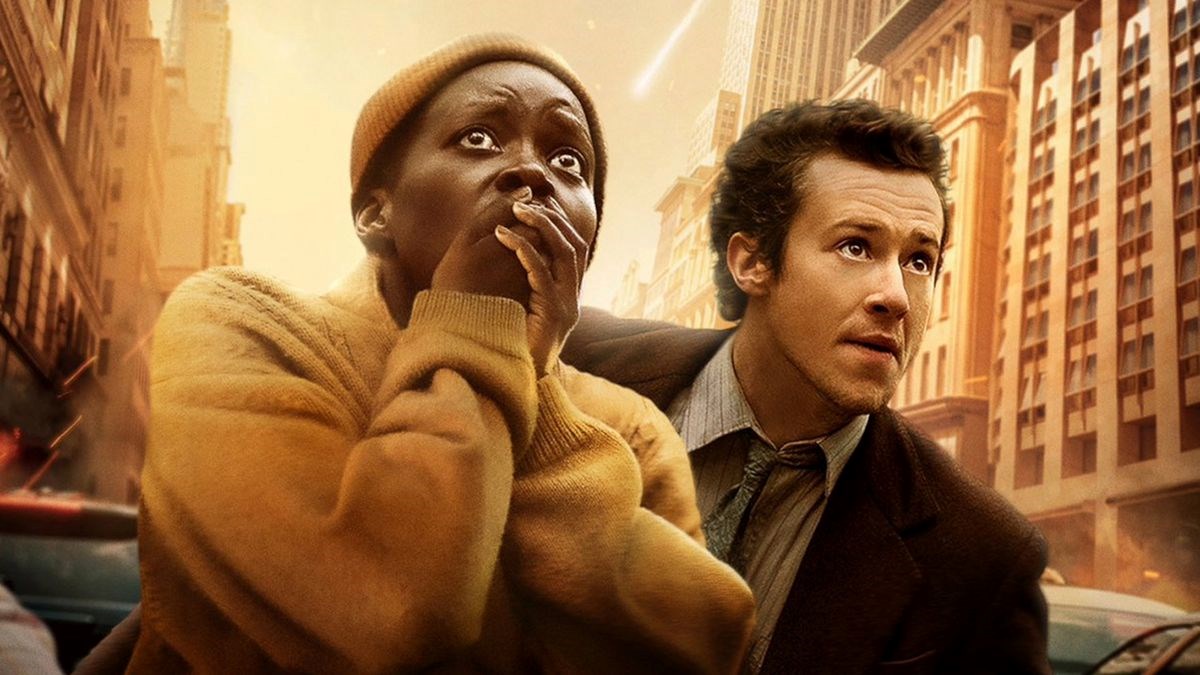
 Movie Reviews1 week ago
Movie Reviews1 week agoMovie review: A Quiet Place, quivering since Day One
-
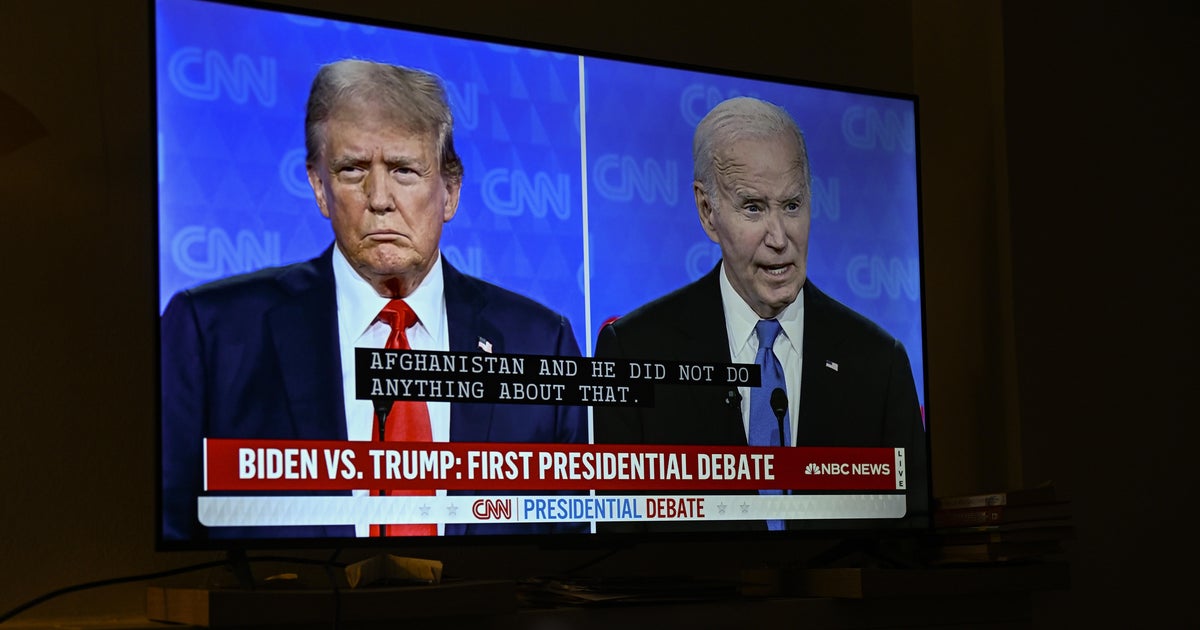
 News1 week ago
News1 week agoIncreasing numbers of voters don’t think Biden should be running after debate with Trump — CBS News poll
-

 World1 week ago
World1 week agoCaribbean braces for ‘very dangerous’ Hurricane Beryl
